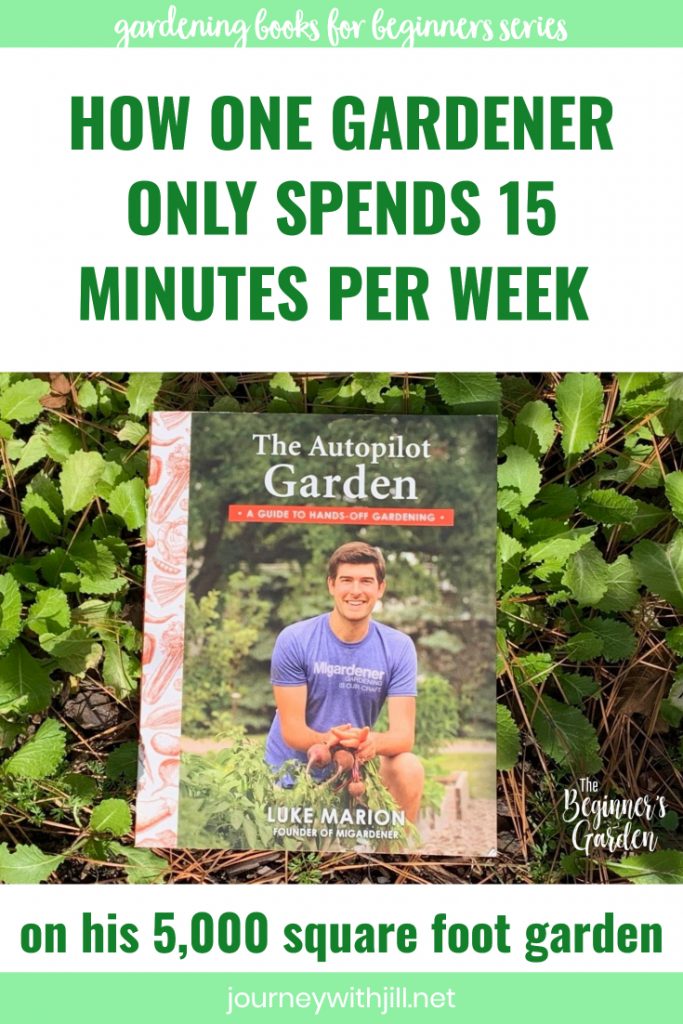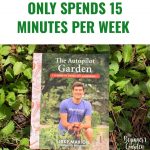The Autopilot Garden with MI Gardener Luke Marion
How does a garden that requires minimal input and maximum harvest sound to you? Instead of you working for it, your garden works for you. It’s almost like the garden runs on autopilot. Sounds too good to be true, right?
Not according to MI Gardener’s Luke Marion. Luke spends 15 minutes a WEEK in his 5,000 sq ft garden, outside of the busy planting time. So, how does he do it?
*links below contain affiliate links
Luke shares his methods in his book, The Autopilot Garden, but in today’s post and episode on the Beginner’s Garden Podcast, he gives a bit of insight into some of the primary methods he has put in place in his garden: core gardening and high-intensity spacing.
Continue reading for the highlights or click below to listen to our full conversation.
Core Gardening
Core Gardening is a variation of a gardening method called hugelkultur. In this method, gardeners grow in big mounds that included buried trees and other organic material. As the organic matter decayed, the nutrients fed the soil and nourished the crops. Other cultures that didn’t have as many trees would use grasses in a similar way and the grass would break down more quickly. Not only would it nourish the plants, but it also would hold onto water for the plants to tap into.
Core gardening is inspired by this idea. We can use straw bails or leaves in our gardens in a similar way. We let them break down and bury them in the soil in the spring. This has drastically decreased the need for water in Luke’s garden so that he does not even have an irrigation system in place. This simple method can help reduce the work in the garden as well as our environmental impact.
High-Intensity Spacing
Another way Luke saves time in weeding and watering in his garden is by using high-intensity spacing. This is when you intentionally plant your crops close together. When your plants are close, they shade the soil, which suppresses weed germination. It also prevents evaporation.
But how close is too close?
Generally, you want the leaves of mature plants just to touch one another.
While overcrowding is a common problem with beginning gardeners, it is often more of an issue of soil fertility rather than space that the plant needs. If you focus on loamy soil combined with nutrient-rich organic matter, then you can plant your crops closer together. There is more competition when the soil is not rich in nutrients.
A good place to start would be to halve the recommended spacing you find on seed packets. If the leaves are not touching when they are fully grown, you can move them closer next year.
The Autopilot Garden Book
Luke has been gardening since he was just a toddler, and now he teaches millions of gardeners how to garden smarter. By using the methods he teaches through his Youtube Channel and now in his book, The Autopilot Garden, both beginners and gardeners with experience can learn how to enjoy a garden that almost runs on autopilot.
Check out the other books in this Gardening Books for Beginner’s Series:
Field Guide to Urban Gardening with Kevin Espiritu of Epic Gardening
Organic Gardening for Everyone by CaliKim
Do you get overwhelmed with garden planning?
Subscribe here for my best tips to plan your garden in just 7 days -- all for FREE.
Plus, I'll send you my "In the Garden E-mail" on Fridays, periodic updates on garden resources relevant to you, and you'll receive access to my entire bank of free garden downloads!
You are also agreeing to our privacy policy.



